 What Are The Health Risks Associated With Smelly Drains
What Are The Health Risks Associated With Smelly Drains
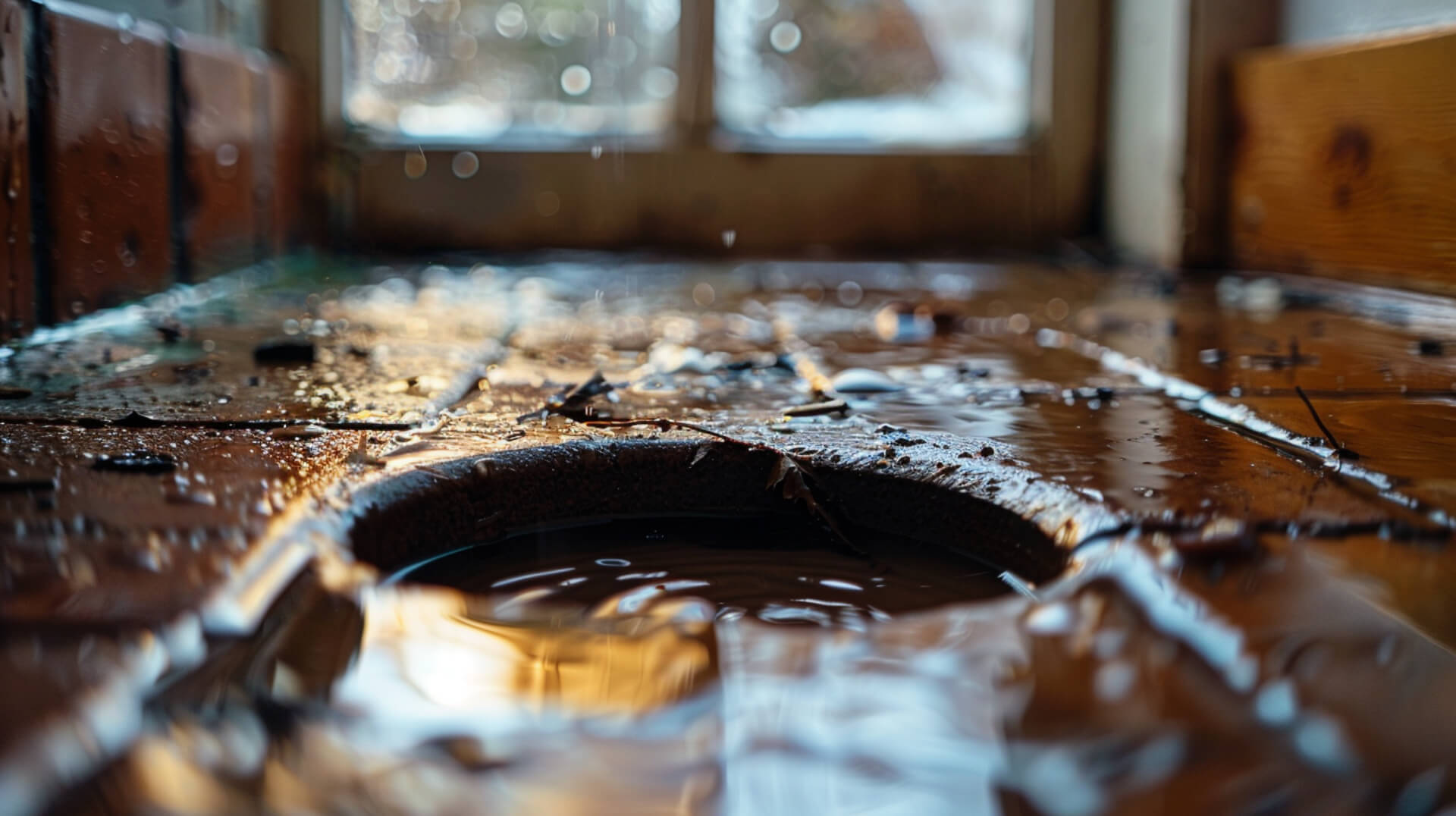
Sewer gas, a complex mixture of toxic and non-toxic gases, can emanate from household and commercial drainage systems, presenting various health risks. Understanding its composition is crucial for property management to mitigate potential hazards effectively.
Primary Components of Sewer Gas
The primary constituents of sewer gas include hydrogen sulphide, methane, ammonia, and carbon dioxide. Each of these gases can arise from the decomposition of organic waste materials commonly found in sewers and drains.
- Hydrogen Sulphide: Recognisable by its foul smell of rotten eggs, it is toxic and can cause a range of health issues.
- Methane: A colourless, odourless gas that is highly flammable and can pose explosion risks.
- Ammonia: Causes irritation to the eyes, nose, and throat upon exposure.
- Carbon Dioxide: In high concentrations, it can lead to oxygen deprivation.
Risks Posed by Sewer Gas Components
Each component of sewer gas carries specific risks:
- Toxicity: Hydrogen sulphide is particularly hazardous at high concentrations, leading to headaches, dizziness, and even more severe health effects.
- Flammability: Methane’s presence increases the risk of explosions, particularly in enclosed spaces.
- Irritation: Ammonia can cause immediate irritation to mucous membranes, affecting the respiratory system.
- Asphyxiation: Carbon dioxide, by displacing oxygen, can lead to suffocation in poorly ventilated areas.
Accumulation of Sewer Gas in Drainage Systems
Sewer gas can accumulate in property drainage systems due to a variety of factors, including:
- Leaks and Cracks: Faulty seals or damage in the pipes can allow gas to seep into living or working spaces.
- Blocked Vents: Vents that are clogged prevent sewer gas from escaping, leading to a build-up.
- Dry Plumbing Fixtures: Traps that have dried out can no longer prevent gas from rising into the property.
- Improper Ventilation: Inadequate ventilation systems fail to disperse gases, allowing them to concentrate to dangerous levels.
Understanding these components and risks is the first step in addressing the potential health hazards associated with smelly drains and ensuring the safety of occupants within the property.
Health Risks Associated with Sewer Gas Exposure

Exposure to sewer gas, which is a mixture of various gases, can lead to a range of health issues. The immediate effects of such exposure may include headaches, dizziness, and nausea. These symptoms are often exacerbated by high concentrations of hydrogen sulphide, a common component of sewer gas known for its distinctive rotten egg smell.
Immediate Health Effects of Sewer Gas
When you’re exposed to sewer gas, the body’s response can vary depending on the concentration and duration of exposure. Low to moderate levels often result in eye, nose, and throat irritation, while higher concentrations can cause more severe symptoms such as respiratory issues, unconsciousness, or even death, particularly in confined spaces.
Long-Term Health Implications
Prolonged exposure to sewer gas can have chronic health effects. Continuous inhalation of these gases may lead to fatigue, irritability, memory issues, and long-term organ damage. It’s crucial to address any sewer gas leaks promptly to mitigate these risks.
Vulnerable Populations
Certain individuals, such as those with pre-existing respiratory conditions, the elderly, and young children, are more susceptible to the adverse effects of sewer gas. Their bodies may be less capable of handling the toxic burden, making it essential to maintain a safe environment.
Most Hazardous Components
Among the various gases, hydrogen sulphide and methane pose significant health risks. Hydrogen sulphide is highly toxic, even at low levels, while methane presents a risk of explosion and asphyxiation. It is imperative to ensure that living and working environments are free from these hazardous gases to protect human health.
Recognising Symptoms of Sewer Gas Exposure
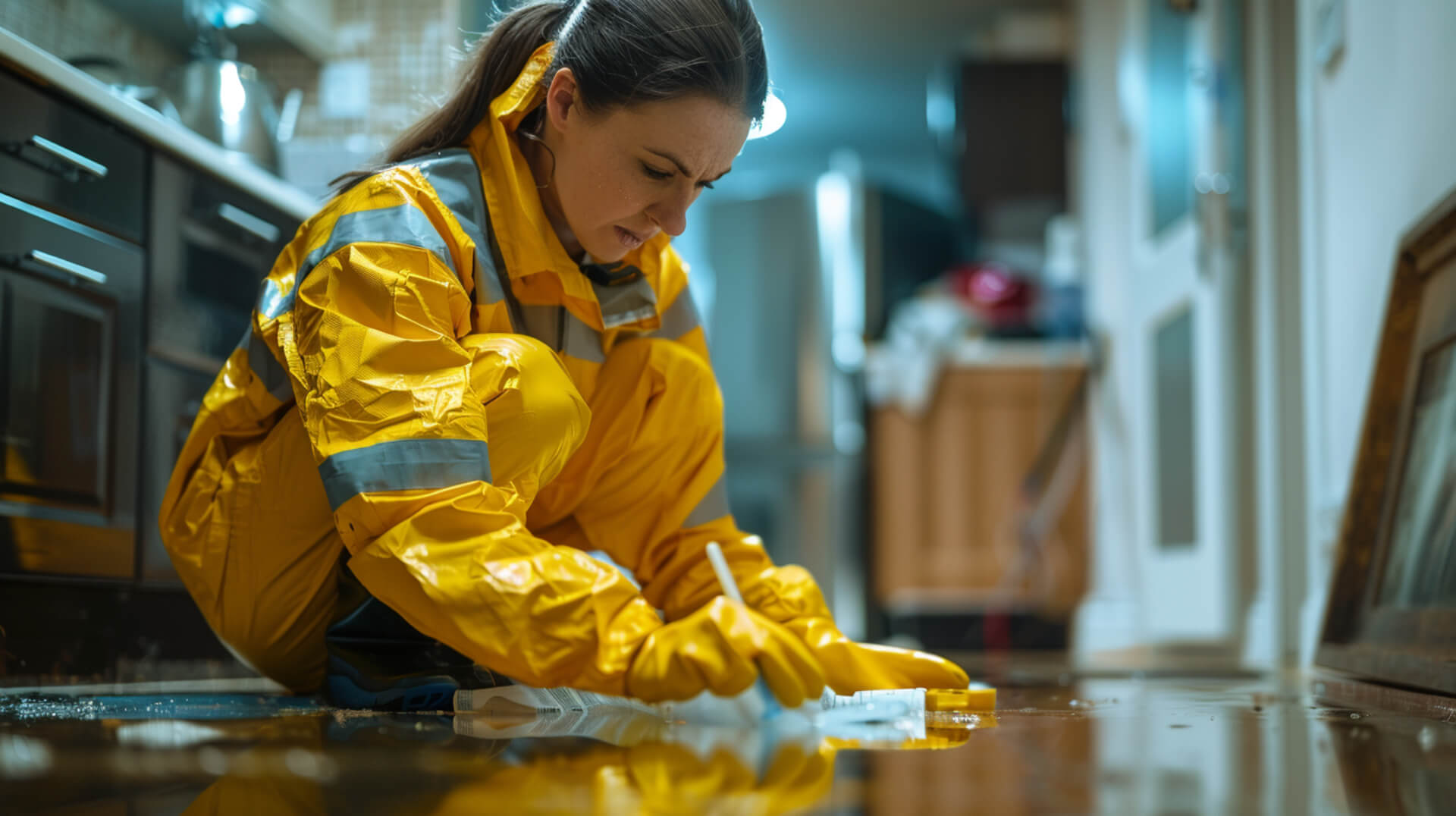
Awareness of the symptoms associated with sewer gas exposure is crucial for maintaining a safe environment in homes and workplaces. The presence of sewer gas is often detected by its characteristic odour, resembling rotten eggs, which is a clear indicator of hydrogen sulphide. This section outlines the early warning signs and the importance of prompt recognition and action.
Early Warning Signs of Exposure
If you detect a foul smell similar to rotten eggs, it could be an early sign of sewer gas leakage. Other initial symptoms to be vigilant about include:
- Eye, nose, and throat irritation
- Fatigue and dizziness
- Headaches
- Nausea
Importance of Prompt Symptom Recognition
Recognising these symptoms swiftly is vital as it can prevent the escalation of exposure to more harmful concentrations of sewer gas, which could lead to serious health complications or even fatality.
Actions to Take Upon Detection
Upon detecting signs of sewer gas exposure:
- Ventilate the affected area immediately.
- Evacuate the premises if the smell is strong or symptoms are severe.
- Contact a professional plumber to inspect and repair the source of the leak.
- Seek medical attention if symptoms persist or in cases of severe exposure.
By taking these steps, you can ensure the safety and well-being of all occupants within the affected property.
Identifying Causes of Sewer Gas Leakage
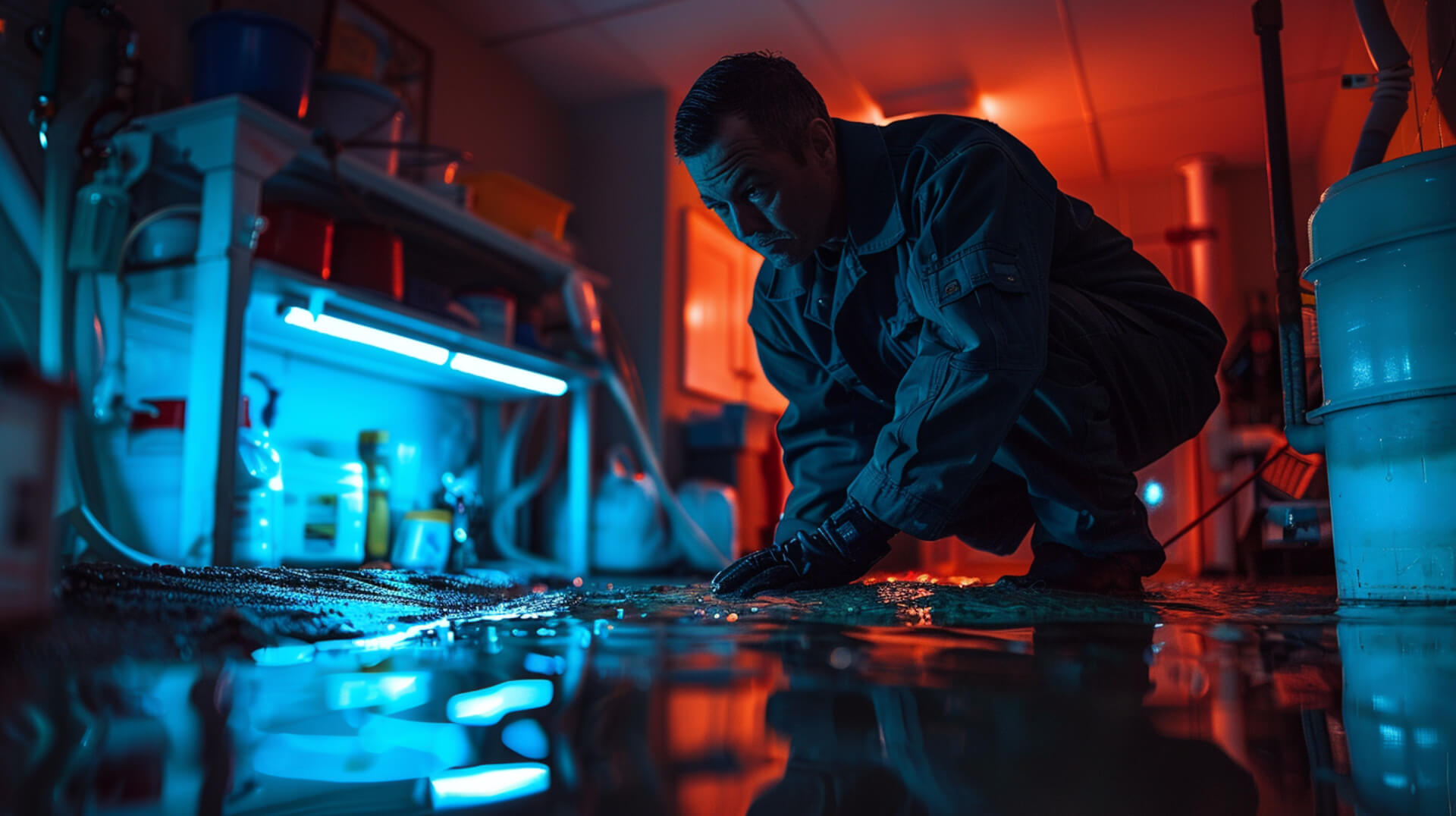
Understanding the origins of sewer gas leakage is essential for prevention and remediation. Structural issues in plumbing systems, blocked vents, clogged drains, and poor maintenance are among the primary culprits that can lead to the presence of hazardous sewer gases in properties.
Structural Issues Leading to Leaks
Plumbing systems are complex networks of pipes, vents, and traps. Structural problems such as cracks or loose fittings can create pathways for sewer gas to escape into living spaces. Regular inspections can identify these issues before they escalate.
Blocked Vents and Clogged Drains as Risk Factors
Vents play a crucial role in maintaining proper pressure and removing gases from the plumbing system. When these become blocked, sewer gas can back up and enter the property. Similarly, clogged drains, often caused by accumulations of debris like food particles and hair, can prevent the normal flow of wastewater, leading to gas buildup.
The Impact of Poor Maintenance
Neglecting regular maintenance can lead to deteriorating plumbing conditions, which in turn increases the risk of sewer gas leaks. Proactive care, including routine checks and prompt repairs, is vital in preventing these issues.
Buildup Contributions to Blockages
Everyday materials such as food waste, hair, and limescale can accumulate over time, leading to blockages that trap sewer gas. Ensuring that drains are kept clear is a simple yet effective measure to maintain a healthy plumbing system.
Preventative Measures to Avoid Sewer Gas Exposure
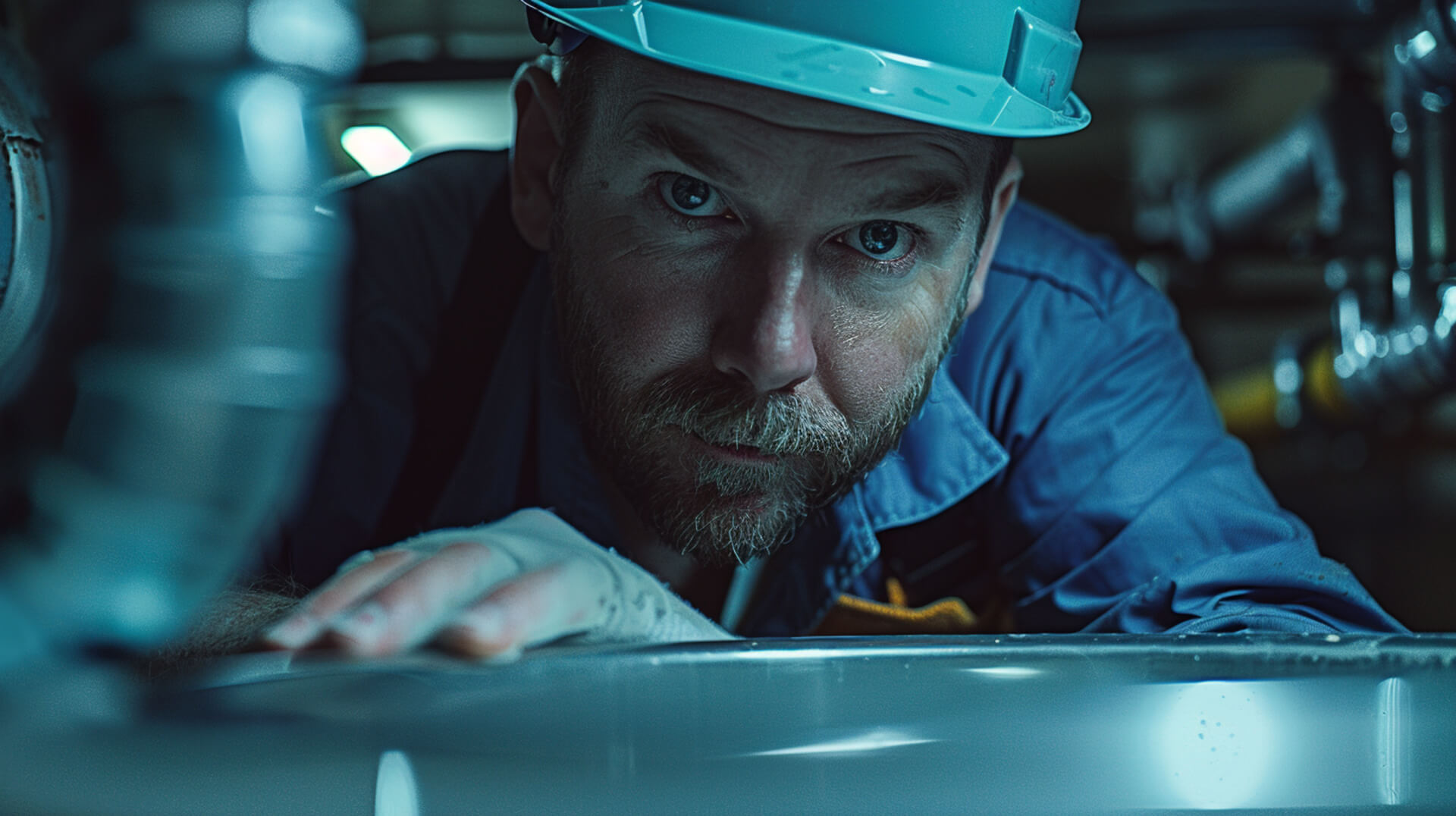
Implementing regular maintenance tasks is key to preventing sewer gas leaks. Property owners are advised to conduct periodic checks to ensure the integrity of their plumbing systems.
Regular Maintenance Tasks
To mitigate the risk of sewer gas exposure, it is recommended to:
- Inspect pipes for signs of cracks or damage.
- Clear drains and vents to prevent blockages.
- Check for water in P-traps, which block sewer gases from rising up through drains.
Ensuring Tight Toilet Fittings
Loose toilet fittings can be a source of sewer gas leakage. It is essential to:
- Verify that toilets are securely fitted to the floor.
- Replace worn wax rings that seal the toilet base.
- Ensure the water level in the toilet bowl is adequate to prevent gas escape.
The Role of Proper Ventilation
Ventilation is crucial in dispersing any sewer gases that may enter the property. Ensure that:
- Vent pipes are free from obstructions.
- Airflow is sufficient in areas with plumbing fixtures.
Benefits of Professional Plumbing Inspections
Professional inspections can identify and rectify potential issues before they become hazardous. These inspections can provide:
- Expert assessment of the plumbing system’s condition.
- Identification of hidden leaks or damage.
- Recommendations for repairs or upgrades to enhance safety.
By adhering to these preventative measures, you can significantly reduce the likelihood of sewer gas exposure and maintain a safe environment.
Immediate Actions for Sewer Gas Exposure
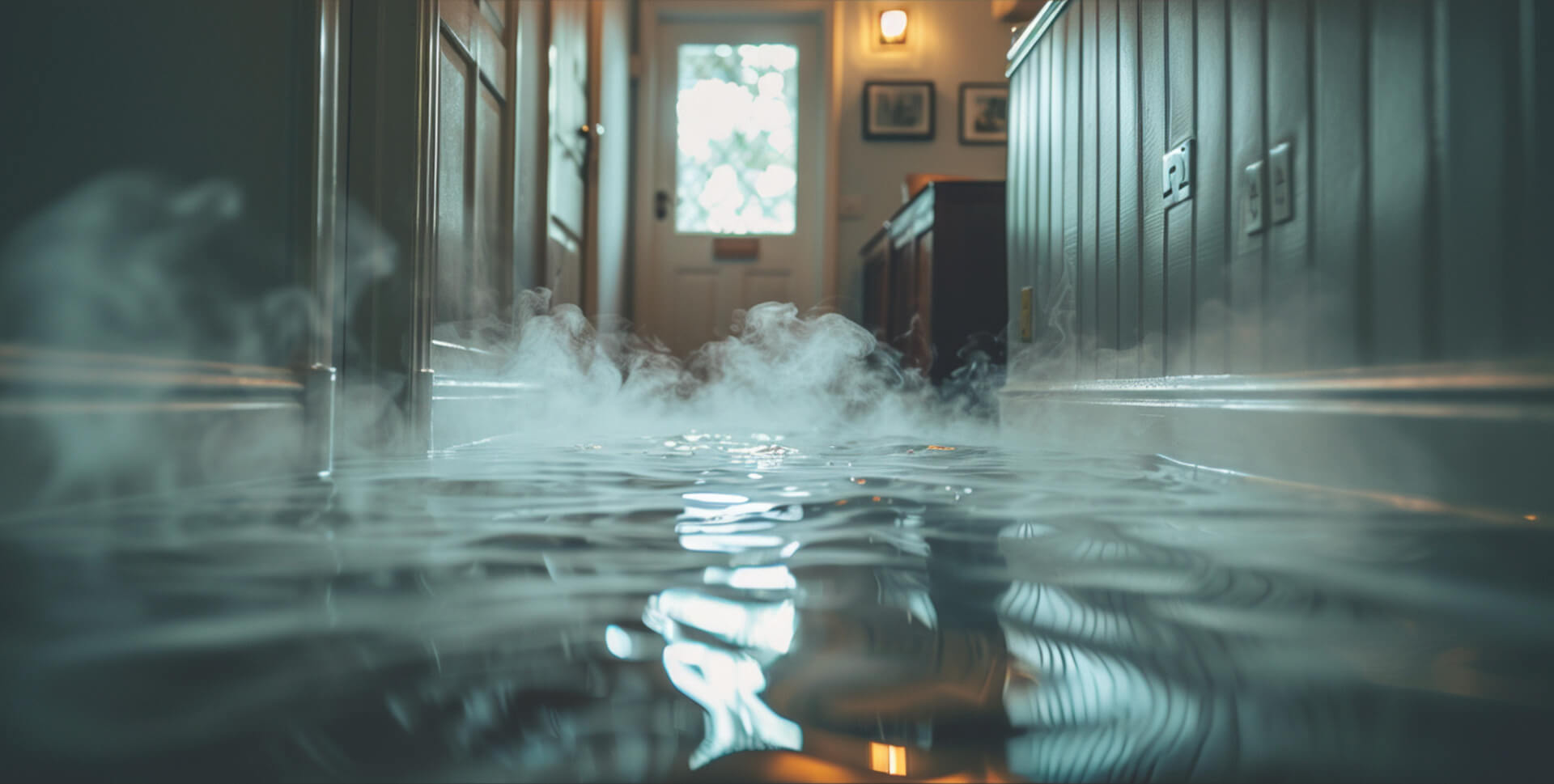
In the event of sewer gas detection, prompt action is required to ensure the safety of all occupants. Ventilation is the first critical step, followed by professional assessment and repair.
Ventilating Affected Areas
To mitigate the risks associated with sewer gas exposure, it is imperative to:
- Open windows and doors to allow fresh air to circulate.
- Use fans to help disperse the gas if the smell is noticeable but not overwhelming.
- Evacuate the area if the odour is strong, indicating a high concentration of gas.
Necessity of Professional Plumbing Repair
Professional plumbing repair is essential due to:
- The complexity of accurately diagnosing the source of the leak.
- The potential for gas to accumulate in hard-to-detect areas.
- The expertise required to repair the plumbing to prevent future leaks.
Medical Treatments for Severe Exposure
If severe exposure to sewer gas occurs, medical attention may be necessary. Treatments can include:
- Oxygen therapy for those experiencing respiratory distress.
- Medications to alleviate symptoms such as headaches or nausea.
- Monitoring for any signs of long-term health effects.
Ensuring Occupant Safety
Property owners have a responsibility to:
- Inform occupants about the risks and symptoms of sewer gas exposure.
- Provide clear instructions on what to do if sewer gas is detected.
- Ensure that emergency contact numbers for medical and plumbing services are readily available.
Engaging Professional Services for Sewer Gas Management
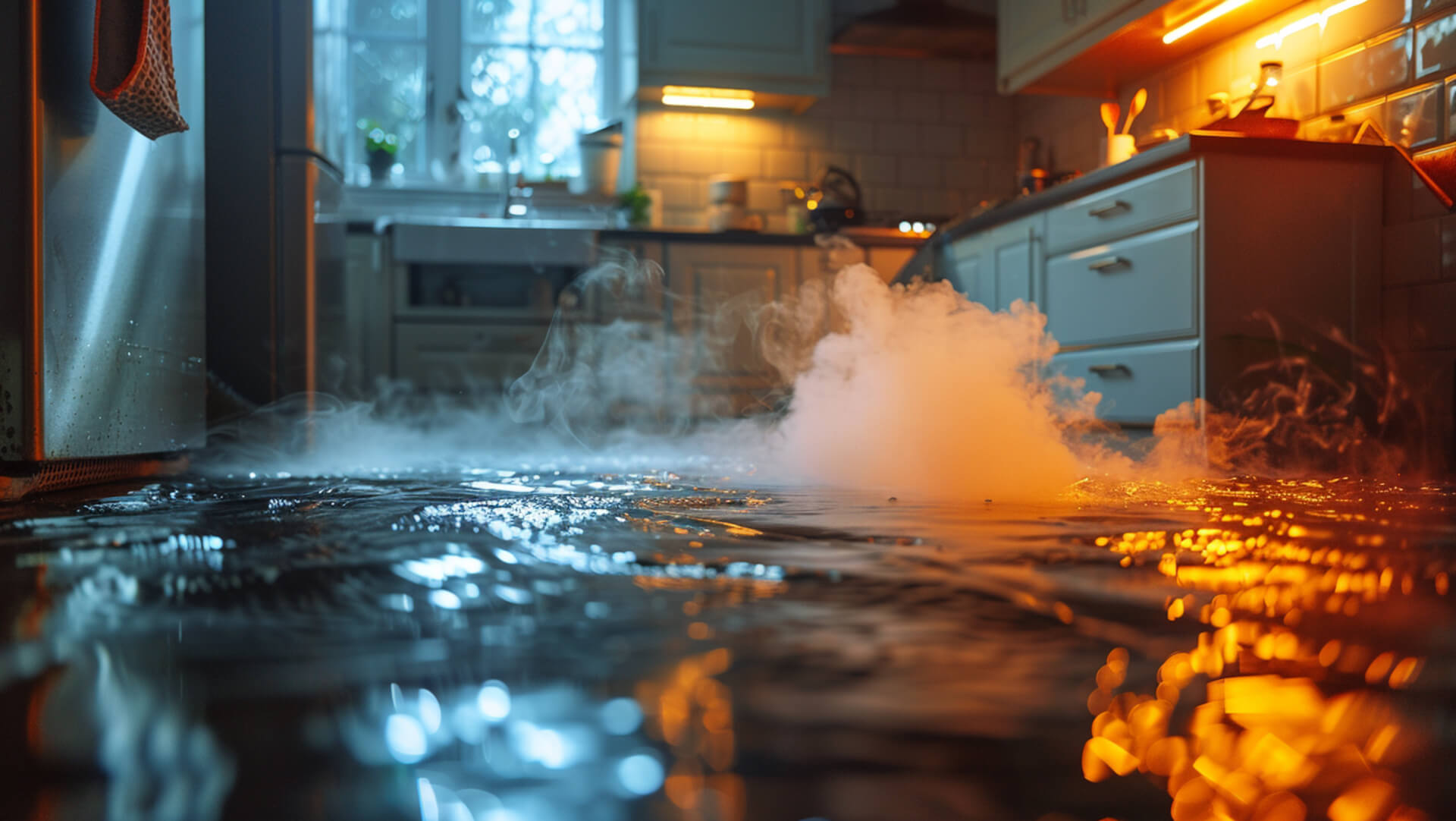
When dealing with the complexities of sewer gas detection and repair, professional services offer expertise that is crucial for both safety and compliance. These experts are equipped with the necessary tools and knowledge to effectively diagnose and address sewer gas issues.
Professional Diagnosis and Repair of Sewer Gas Issues
Professional plumbers utilise a variety of methods to detect sewer gas leaks, including:
- Electronic gas detectors that can pinpoint gas concentrations.
- Smoke tests to reveal the presence of leaks in the plumbing system.
- Visual inspections of pipes and joints for signs of damage or wear.
Criteria for Selecting a Service Provider
When choosing a professional service provider, consider the following criteria:
- Certification and licencing to ensure they are qualified to perform the work.
- Experience with sewer gas detection and repair.
- Availability for emergency services, as sewer gas issues can arise unexpectedly.
Preventing Future Sewer Gas Problems
Professional intervention can help prevent future issues by:
- Providing thorough repairs that address the root cause of leaks.
- Offering maintenance advice to property owners to reduce the risk of recurrence.
- Implementing upgrades to the plumbing system that enhance its integrity and safety.
By entrusting sewer gas concerns to professionals, you ensure that the problem is addressed with the highest standards of safety and quality.
DIY Solutions and Regular Maintenance to Mitigate Sewer Gas

Simple DIY Solutions for Sewer Gas Issues
For property owners experiencing minor sewer gas problems, several do-it-yourself remedies can be effective:
- Baking Soda and Vinegar: A mixture of baking soda and vinegar can help clear minor blockages that may cause sewer gas odours.
- Hot Water Flush: Regularly flushing drains with hot water can prevent the buildup of substances that contribute to blockages and sewer gas emissions.
- Commercial Cleaners: Use cleaners designed for plumbing systems to break down organic matter that could lead to sewer gas leaks.
Importance of Regular Drain Cleaning
Regular drain cleaning is a proactive measure that serves multiple purposes:
- It maintains clear pathways for wastewater, reducing the likelihood of sewer gas buildup.
- It can prevent the accumulation of debris that could lead to more significant plumbing issues.
Moisture Control in Combating Sewer Gas
Controlling moisture levels is essential because:
- It prevents the growth of bacteria that can produce sewer gas.
- It reduces the risk of mould, which can exacerbate health issues related to sewer gas exposure.
Limitations of DIY Solutions
While DIY solutions are useful for minor issues, they have limitations:
- They may not be effective for severe blockages or structural problems.
- They cannot replace the expertise of professional plumbers in diagnosing and repairing complex sewer gas leaks.
Health Conditions Arising from Sewage Exposure

Exposure to sewage, which may contain a variety of pathogens, can lead to several infectious diseases. Understanding these health risks and implementing preventive measures is crucial for maintaining public health.
Infectious Diseases Linked to Sewage
When sewage or sewer gas invades living spaces, it can carry harmful microorganisms, leading to diseases such as:
- Gastrointestinal Infections: Caused by E. coli, Salmonella, and other bacteria that thrive in sewage.
- Hepatitis A: A liver infection transmitted through faecal contamination found in sewage.
- Parasitic Infections: Such as Giardiasis and Cryptosporidiosis, which are spread through water contaminated with sewage.
Contribution of Sewage to Disease Spread
Sewage can act as a vehicle for pathogens, facilitating their spread in the following ways:
- Contaminating water supplies or food sources.
- Creating breeding grounds for bacteria and parasites.
- Emitting aerosolized particles that may be inhaled or come into contact with mucous membranes.
Importance of Recognising Sewage-Related Health Risks
Awareness of the health risks associated with sewage exposure is vital because:
- It informs the implementation of appropriate hygiene practices.
- It underscores the need for prompt action when sewage contamination is suspected.
Preventive Measures Against Sewage-Related Diseases
To reduce the risk of disease from sewage exposure, consider the following preventive actions:
- Ensure proper sanitation and sewage disposal systems are in place.
- Regularly inspect and maintain plumbing to prevent leaks and overflows.
- Practice good personal hygiene, especially handwashing, after potential exposure.
Addressing Mould and Dampness from Sewer Issues

Sewer problems can lead to increased moisture, which is a primary factor in mould growth within properties. Understanding the connection between sewer issues and mould development is essential for maintaining a healthy indoor environment.
Contribution of Sewer Issues to Mould Growth
Sewer leaks and overflows contribute to damp conditions, which are conducive to mould proliferation. The presence of mould in a property can lead to:
- Structural damage due to mould infiltrating building materials.
- Health concerns, particularly respiratory issues and allergies.
Common Moulds in Moist Environments
Properties with sewer problems may encounter various types of mould, including:
- Aspergillus: Often found in excessively damp conditions and can cause allergic reactions.
- Cladosporium: Thrives in both warm and cold conditions and can trigger respiratory problems.
Health Concerns in Damp Environments
Damp environments resulting from sewer issues can exacerbate health problems such as:
- Asthma attacks in individuals with pre-existing conditions.
- Allergic reactions and infections, especially in sensitive individuals.
Effective Remediation of Mould and Dampness
To address mould and dampness effectively, property owners should:
- Identify and repair the source of moisture, such as fixing sewer leaks.
- Use dehumidifiers to reduce indoor humidity levels.
- Clean and disinfect areas affected by mould, following environmental health guidelines.
By taking these steps, you can help ensure that your property remains safe and healthy for all occupants.
Understanding Overflow Causes in Sewer Systems

Overflow and backflow in sewer systems can result from various factors, including damaged plumbing, severe weather events, and blockages within the system.
Main Causes of Overflow and Backflow
Property owners should be aware of the common causes of sewer system overflow:
- Damaged Plumbing: Broken or cracked pipes can impede the flow of sewage, leading to backups.
- Severe Weather: Heavy rainfall or flooding can overwhelm sewer systems, causing overflows.
- Blockages: Accumulation of debris, such as wipes, grease, or other non-flushable items, can create clogs that lead to backflow.
Protecting Properties from Overflow Damage

To safeguard properties from the damage caused by sewer overflows, consider the following measures:
- Regularly inspect and maintain sewer lines to prevent blockages.
- Instal backflow prevention devices to stop sewage from reversing into the property.
- Create a response plan for quick action in the event of an overflow.
Importance of Disinfection Post-Overflow
After an overflow event, disinfection is critical to:
- Eliminate harmful pathogens that may have been present in the sewage.
- Prevent the spread of disease and protect public health.
Recommended Protective Gear for Overflow Events
When addressing sewer overflows, it is recommended to wear protective gear, including:
- Gloves and boots to prevent direct contact with sewage.
- Masks or respirators to avoid inhaling potentially harmful aerosols.
- Eye protection to guard against splashes.
By understanding these causes and protective measures, property owners can better prepare for and respond to sewer overflow incidents, ensuring the safety and well-being of all occupants.
Enhancing Awareness and Education on Sewer Gas
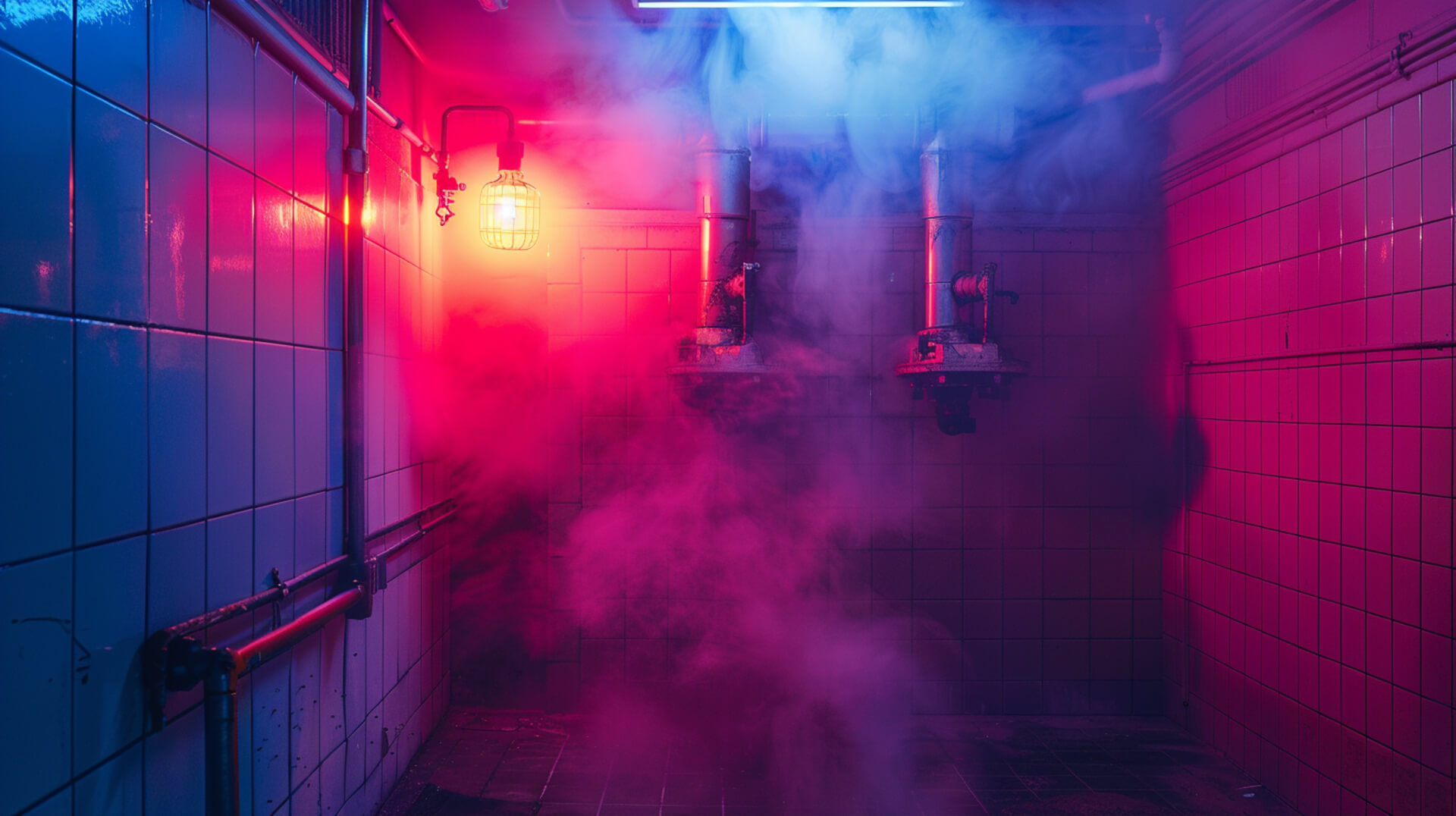
Awareness and education about sewer gas are pivotal components of effective property management. Understanding the composition of sewer gas and its potential health risks is essential for maintaining a safe living and working environment.
The Role of Proactive Maintenance
A proactive approach to maintenance and repair can significantly mitigate health risks associated with sewer gas. Regular inspections and timely interventions prevent the accumulation of gases and ensure the integrity of the plumbing system.
Long-Term Benefits of Prompt Sewer Gas Issue Resolution
Addressing sewer gas issues promptly offers long-term benefits, including:
- Sustained property value by preventing structural damage.
- Improved health outcomes for occupants by reducing exposure to toxic gases.
- Enhanced safety and comfort within the property, contributing to overall well-being.
Collaborative Efforts for a Safe Environment
Property owners, business owners, and facility managers can collaborate to ensure a safe environment by:
- Sharing best practices for sewer gas detection and prevention.
- Establishing clear communication channels for reporting potential risks.
- Coordinating efforts for regular maintenance and emergency responses.
By fostering a culture of awareness and taking collective action, stakeholders can effectively manage the health risks associated with smelly drains and sewer gas.
